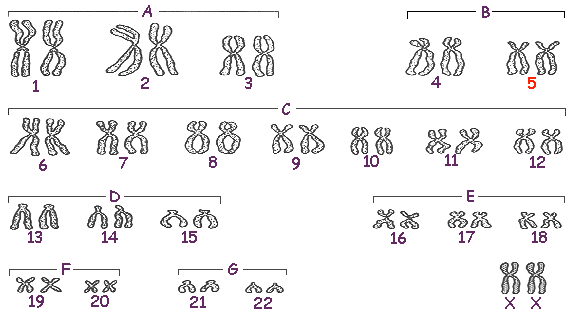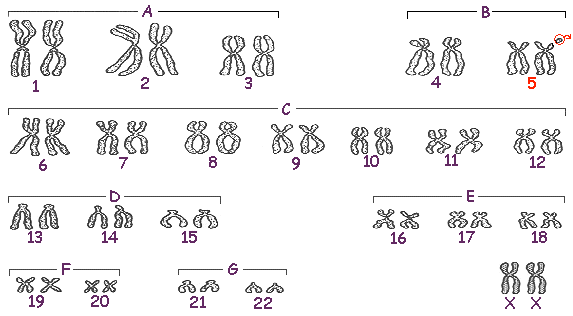The syndrome has been identified
1963 by the French geneticist Jerome Lejeune. He named it for its most distinctive
characteristic the high-pitched, cat-like cry (cri-du-chat = cat`s cry). It
is also known as Cat Cry Syndrome (german: Katzenschrei, spain: maulido del
gato ), 5p- Symdrome (five p minus) or simply as CDC.
Older reports indicate the frequency with 1:50.000, a newer one (1990) with
1:20.000 births. Nevertheless it is a relatively rare genetic abnormality resulting
from the deletion of a part of the short arm of the fifth chromosome.
 |
 |
The partial loss of the short arm of the fifth chromosome takes place during the very first cell divisions of the eggcell. The loss is not caused or determined by any actions of the mother. CDC isn't dependent on the parents, provided there is no translocation (translocation concerns approx. 15% of all cases).
Translocation means that there is already a loss of the short arm of the fifth chromosome present at a parent. However this "broken off" part has fastened itself to another chromosome so that no symptoms of the CDC are present at the parent. With translocation the risk of a repetition is 50% or more.
The risk of repetition for parents who don`t have translocation is completely normal (i.e. according to latest reports at approx. 1:20.000 or less). In these cases the causes cannot be identified so CDC is typically a fluke of nature.
Approximately twice as many girls as boys are born with CDC.
It is possible to detect CDC with amniocentesis or CVS (Chorionic Villus Sampling) already in the first trimester of pregnancy. The diagnosis is with CVS, contrary to the cellcultures necessary with amniocentesis, immediately possible.